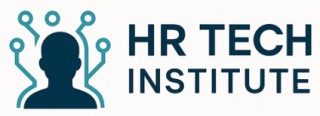Understanding Employee Recognition in the Digital Era
Adapting Recognition Practices for Modern Workplaces
In today's digital era, the way we recognize employees has shifted significantly. Recognition has become a cornerstone of effective workplace culture, influencing how employees feel about their roles and motivating them to perform at their best. This shift is largely due to the increasingly diverse preferences of employees when it comes to being recognized and appreciated. To keep up with these changes, companies are reevaluating their recognition programs, opting for more personalized approaches. Unlike traditional methods, which may have focused mainly on monetary rewards, contemporary practices include a blend of public recognition, peer acknowledgment, and performance-based praise. Each type of recognition plays a vital role in making employees feel valued and instilling a sense of achievement. Modern workplaces are seeing a growing emphasis on creating a culture of appreciation that integrates seamlessly into the day-to-day activities of the organization. Regular feedback, both formal and informal, is crucial in recognition efforts, as timely acknowledgment of hard work prevents the negative impact of delayed recognition. Many organizations are embracing digital solutions to enhance their recognition strategies. These technologies help companies keep track of recognition efforts, tailor programs to suit individual preferences, and provide insights into the impact of their recognition work. Such programs nurture an environment where employees truly feel part of a supportive team, leading to heightened employee engagement and overall job satisfaction. To learn more about innovative ways to approach employee appreciation, including incorporating humor, visit this article. This will provide further insights into how organizations can evolve their recognition practices to foster a robust culture of appreciation in their workforce.The Role of HR Tech in Personalizing Recognition
HR Tech: Crafting Personalized Recognition Experiences
In today's fast-paced workplace, recognizing employees is more crucial than ever, and HR technology plays a significant role in tailoring these experiences. Employee appreciation drives engagement, and with the right tools, companies can create a culture of praise and appreciation that resonates with individual needs and preferences. Gone are the days of one-size-fits-all recognition programs. In its place, HR tech solutions provide innovative ways to cater recognition efforts to individual employees, making them feel valued and acknowledged. This customization can take many forms:- Feedback Systems: Advanced platforms enable real-time feedback, ensuring timely recognition for a job well done. Delayed recognition is a thing of the past, as employees can receive immediate acknowledgment for their hard work.
- Recognition and Rewards Programs: These programs are tailored to employee preferences, allowing companies to offer rewards that truly resonate. Employees like feeling appreciated in ways that speak to their experiences and aspirations.
- Peer-to-Peer Recognition: Technology facilitates peer recognition, a crucial element in fostering a strong workplace culture. Employees can easily recognize their colleagues' contributions, boosting team morale and encouraging a culture of mutual appreciation.
Challenges in Implementing Tech-Driven Recognition
Overcoming Obstacles in Technology-Driven Recognition
Implementing tech-driven recognition can revolutionize how employees in various companies feel valued and appreciated. However, this transformation doesn't come without its challenges. When integrating appreciation mechanisms into workplace technology, companies need to address several key hurdles to ensure successful adoption and effectiveness. One of the most prominent challenges is aligning the new recognition tools with the existing culture appreciation in the company. It’s crucial for organizations to tailor these recognition programs so that they resonate with the team, making employees feel authentically recognized for their hard work. Using a one-size-fits-all approach might not align with individual employee preferences, causing the program to fall flat. Delayed recognition is another roadblock that can diminish the impact of appreciation efforts. While digital platforms enable instant feedback and praise, the sheer volume of other tasks can lead to overlooked moments for recognizing employees. Timely feedback is essential for reinforcing job well done feelings and ensuring the recognition truly supports employee engagement. Additionally, some organizations face resistance when rolling out new technologies among employees not yet comfortable with digital recognition efforts. Consistent training and communication can help ease this transition, encouraging widespread adoption and more active participation in the recognition program. It's also crucial to strike a balance between public recognition and private praise to cater to different individual preferences. While public recognition can foster a rewarding and inclusive workplace atmosphere, it might not appeal to all employees. Tailoring the way you recognize employees by offering various modes of recognition, such as peer recognition or performance rewards, is vital. For those seeking further insights on effectively onboarding technology that fosters employee appreciation and prompts meaningful recognition work, exploring enhancing employee onboarding with a comprehensive meta welcome kit may be beneficial. It offers strategies for threading appreciation and recognition deeply into the cultural fabric of a company from the very beginning. In conclusion, overcoming these challenges demands a tailored approach that integrates feedback and performance metrics seamlessly into the workflow to ensure recognition efforts genuinely engage and make employees feel valued.Best Practices for Effective Recognition Strategies
Enhancing Recognition Initiatives for Maximum Impact
Crafting effective recognition strategies is crucial for creating a work culture appreciation that makes employees feel valued and drives engagement. While earlier sections delved into the importance of digital recognition solutions, it's equally vital to implement best practices that make recognition work for your team.
- Understand Individual Preferences: Like any successful initiative, a recognition program should be tailored to suit the unique preferences of your employees. Some employees feel more appreciated through public recognition during team meetings, while others might prefer a private note of thanks. Offering diverse options within your program can make employees feel genuinely appreciated.
- Integrate Real-Time Feedback: Timely recognition can significantly impact motivation and performance. By including real-time feedback mechanisms in your program, you ensure that employees receive praise promptly for their job well done. Delayed recognition can undermine the effectiveness of your initiatives, causing employees to feel their efforts aren't genuinely appreciated.
- Foster Peer Recognition: Formal recognition from management is important, but incorporating peer recognition can further promote a supportive workplace. Encourage team members to recognize each other's hard work, strengthening bonds and cultivating a stronger sense of community within the company.
- Incorporate a Mix of Rewards: A robust recognition program often includes varying levels of rewards and praise. Whether it's through simple thank-you notes or more tangible rewards like gift cards, offering a range of appreciation methods shows employees that their hard work is acknowledged and valued.
These best practices focus not only on recognition efforts but also on enhancing employee appreciation and satisfaction, thereby driving engagement. By investing time in crafting a recognition program that effectively meets your organization's needs, you can make strides towards a more cohesive and motivated team.
Measuring the Impact of Recognition on Employee Engagement
Evaluating the Influence of Recognition on Employee Involvement
Employee recognition plays a pivotal role in fostering employee engagement. When employees feel recognized for their hard work, they are more likely to be motivated, leading to enhanced performance and commitment. In modern workplaces, companies are employing various recognition programs and feedback mechanisms to sustain a culture of appreciation and ensure employees feel valued.
One way to gauge the impact of these initiatives is by measuring key metrics related to employee engagement. Surveys and feedback programs can assess whether employees feel valued and appreciated for their contributions. Such tools allow companies to adjust their recognition strategies over time, aligning with employees' preferences and the type of recognition they value most.
- Public Recognition: Praising employees' achievements in front of their peers can boost morale and foster a supportive work environment.
- Peer Recognition: Encouraging employees to recognize each other's efforts can enhance teamwork and camaraderie.
- Rewards and Programs: Implementing recognition programs that offer tangible rewards can incentivize employees to strive for excellence.
Regularly gathering feedback on recognition efforts helps companies determine if their strategies are effectively making employees feel appreciated. Monitoring these trends ensures that recognition initiatives are not merely delayed gestures but ongoing efforts that reinforce a culture of appreciation.
Incorporating diverse types of recognition will cater to different preferences in the workforce, thus making the recognition program more effective in boosting employee engagement. By understanding the connection between recognition and engagement, companies can develop recognition work that aligns with their organizational culture, ultimately leading to a more motivated and committed workforce.
Future Trends in Employee Recognition Technology
Embracing the Future of Employee Recognition
As we look to the future, the landscape of employee recognition is set to evolve significantly, driven by technological advancements and changing workplace dynamics. Companies are increasingly recognizing the importance of making employees feel valued and appreciated, and technology is playing a pivotal role in this transformation.
AI and Machine Learning in Recognition Programs
Artificial intelligence (AI) and machine learning are becoming integral to recognition programs. These technologies can analyze employee performance data to identify patterns and preferences, allowing companies to tailor recognition efforts to individual employees. This personalization ensures that employees feel recognized in ways that resonate with them, enhancing their sense of appreciation and engagement.
Real-Time Feedback and Recognition
In the future, real-time feedback and recognition will become more prevalent. Employees will no longer have to wait for annual reviews to receive praise for a job well done. Instead, instant feedback systems will enable managers and peers to recognize employees' hard work as it happens, fostering a culture of appreciation and continuous improvement.
Integration of Social Recognition Platforms
Social recognition platforms are set to become a staple in the workplace, allowing employees to publicly recognize their peers. This type of recognition not only boosts morale but also strengthens team bonds and reinforces a positive company culture. As these platforms become more sophisticated, they will offer more ways to celebrate achievements and milestones, making employees feel valued and appreciated.
Data-Driven Insights for Enhanced Engagement
Data analytics will provide companies with valuable insights into the effectiveness of their recognition programs. By measuring the impact of recognition on employee engagement, companies can refine their strategies to better meet the needs and preferences of their workforce. This data-driven approach ensures that recognition efforts are not only meaningful but also aligned with organizational goals.
Looking Ahead
The future of employee recognition is bright, with technology offering new opportunities to enhance how employees are recognized and appreciated. By embracing these trends, companies can create a workplace culture that values and celebrates its employees, ultimately driving performance and engagement to new heights.













